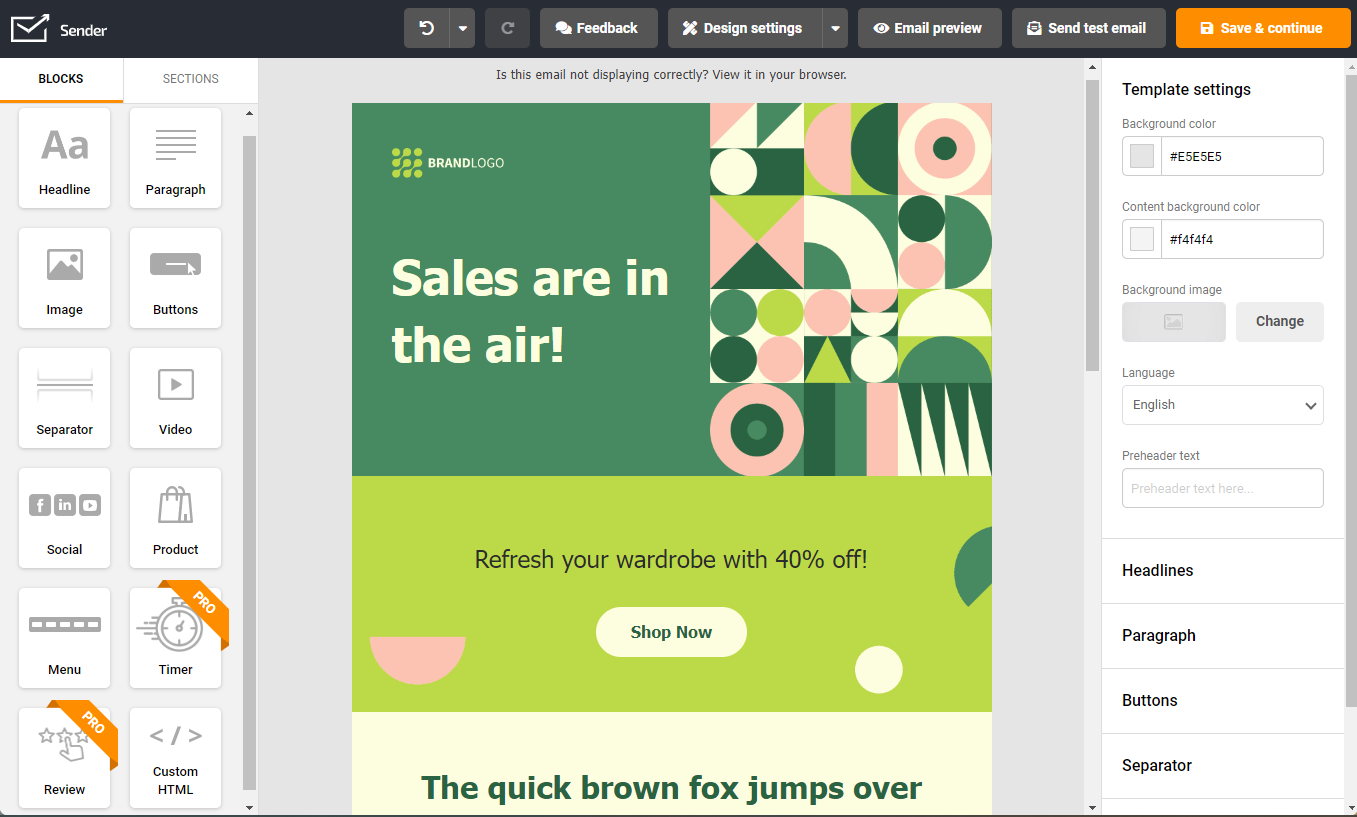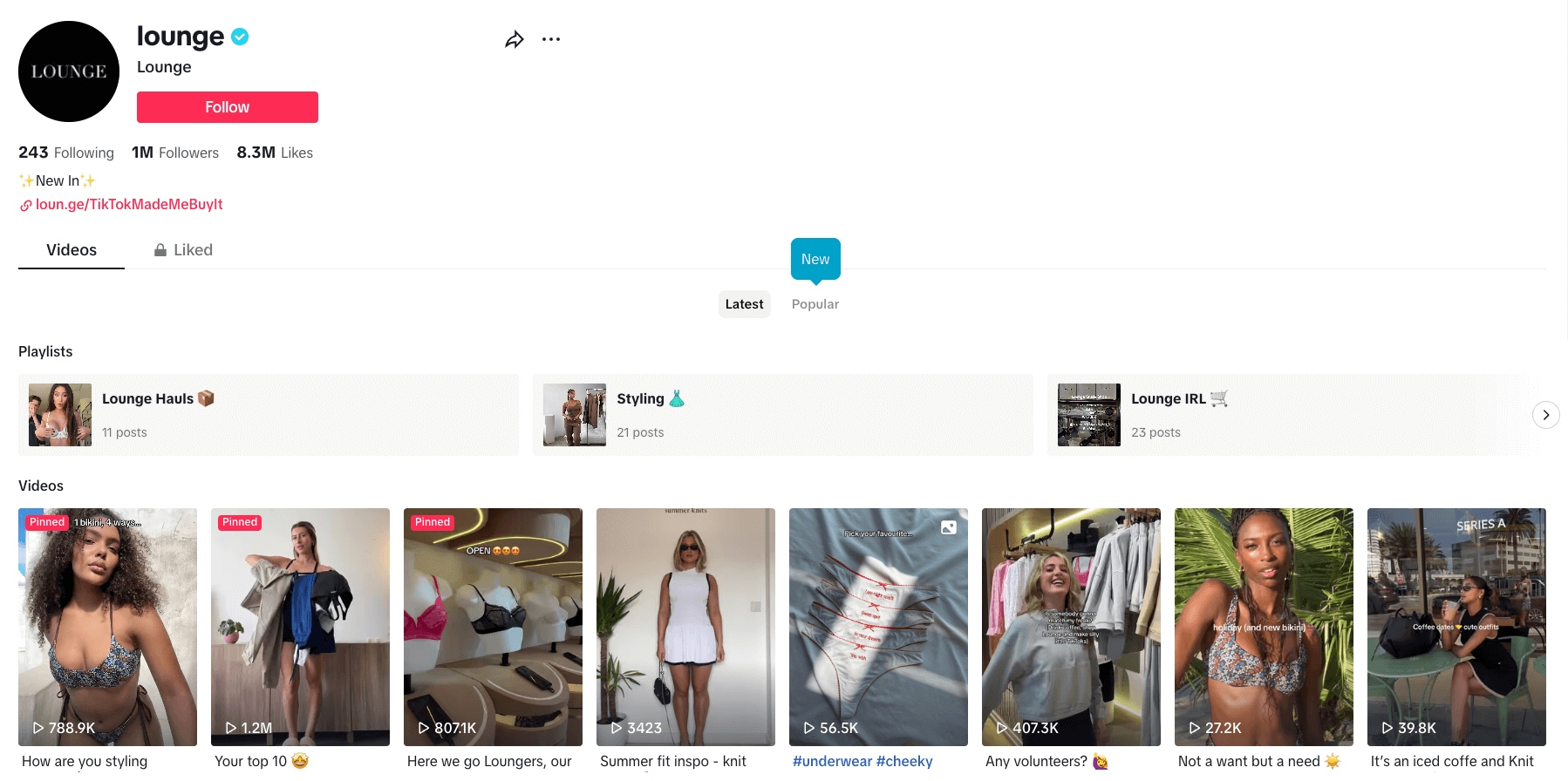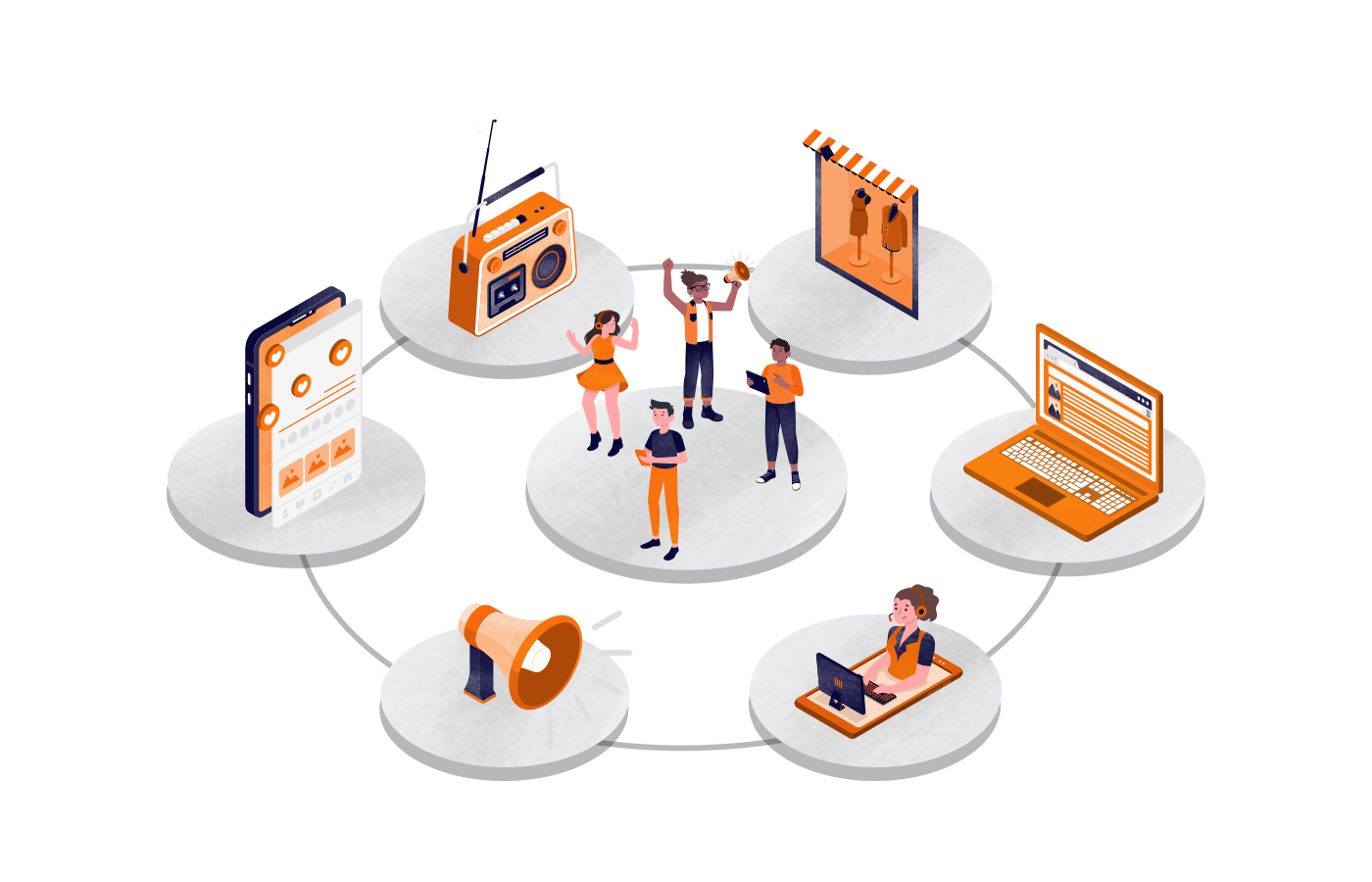Picture this: you discover a captivating banner ad online, prompting you to click for more details. Instantly, you’re redirected to the brand’s website. Curious to know more, you check out the brand’s social media for photos and reviews by other users.
This experience, where the same message resonates across all channels, is the essence of omnichannel marketing. It’s about creating a unified, consistent journey for your customers, whether they’re engaging with your brand online or in person.
Discover how this marketing strategy can elevate your brand and boost the shopping journey for your customers!!
What is Omnichannel Marketing?
Omnichannel marketing definition varies, but is best described as the practice of consistent messaging across all channels. This approach provides a cohesive brand experience across multiple platforms – from physical store locations (brick and mortar stores) to online presence (social media profiles & websites).
Omnichannel marketing focuses on creating cohesive customer experiences across all channels, multiple devices, and customer touchpoints. This approach is designed to meet the expectations and desires of consumers who interact with brands through multiple platforms.
In short, omnichannel marketing is a way to market and sell products with three goals:
- Keep the brand message the same across multiple channels throughout the entire buyer’s journey;
- Make sure you provide a consistent experience from start to end, no matter how your customers interact with the brand;
- Stay in touch with your customers after they buy to maintain customer loyalty.
What is Omnichannel Personalization?
Omnichannel personalization is the practice of delivering an individualized experience across all customer touchpoints — online, in-store, mobile apps, social media, email marketing, etc.
This means taking into account customer data from multiple channels and using it to create targeted, custom-made experiences that meet each customer’s needs and desires.
To put it more simply, retailers must continuously collect and integrate customer data across all touchpoints, from customer loyalty programs to product reviews, crafting a comprehensive view of each shopper’s preferences.
This exchange of information helps to make personalized profiles, allowing you to communicate exclusive offers, tailored promotions, and customized product recommendations to your target audience. This ensures that each message resonates with the individual’s unique interests and needs.
How Does Omnichannel Marketing Work?
Let’s face it: adapting to the modern buyer’s journey has gotten a bit more complicated. Whether you’re selling sneakers or software, chances are, your customers are hopping from one device to another before they make a purchase.
Omnichannel marketing adopts a consumer-centric perspective on marketing strategies, allowing consumers to engage with brands across multiple devices and platforms, from social media platforms to customer service hotlines.
It’s about making every click, tap, and step count, crafting a story that’s uniquely yours.
Have you ever added a pair of sneakers to your cart on your smartphone, and later found them waiting for you on your laptop? That’s not luck; it’s cross-channel marketing at work!
Tips to Make Your Omnichannel Marketing Magic Work
- Get to know your customers: Really dig into what your customers like. Understand their desires, fears, and behaviors. This understanding allows you to tailor your communication to address their pain points effectively.
- Make everything smooth: Ensure your channels are more in sync than a boy band from the ’90s. Whether online, offline, or through a pigeon post, the message should be the same everywhere.
- Personalize, don’t generalize: Every customer is different, so treat them that way. Personalized experiences are the secret ingredients that make a good story great.
- Use tech smartly: Use all the tech tools you have to keep up with what your customers shop for and to predict, adapt, and respond to their needs in real time.
- Optimize and iterate: Continuously measure the effectiveness of your omnichannel marketing strategies and be prepared to make adjustments. The digital landscape is ever-evolving, and so should be your omnichannel approach and marketing efforts.
Use email and SMS together to create a dynamic duo that delivers outstanding results for your marketing campaigns.

The Benefits of Omnichannel Approach
By integrating various marketing channels, companies are providing a more cohesive and convenient consumer experience.
Whether it’s receiving personalized recommendations based on your browsing history, exclusive offers via SMS, or a reminder about an abandoned cart, the omnichannel marketing approach is all about making life easier for the customer.
Here are the key benefits of adopting an omnichannel marketing strategy:
- Cost reduction. Streamlining the process of acquiring customer data across different marketing channels can significantly lower the costs of advertising.
- Actionable insights. An integrated approach offers a deeper understanding of your customers’ behavior, expectations, preferences, and needs.
- New markets. It opens doors to new market segments, attracting a broader audience.
- Sales increase. A seamless user experience can encourage more purchases, boosting overall sales.
- Keeping customers engaged after a sale. Staying in touch with customers post-purchase encourages customer engagement, interactions, and interest in your brand.
- Customer loyalty. A personalized shopping experience and customer centric approach foster loyalty, encouraging repeat business.
To recap, an omnichannel strategy not only benefits the customer with a more integrated and customized experience but also offers businesses a wealth of advantages, from cost savings to increased customer loyalty.
4 Attributes of Omnichannel Marketing
At the heart of a successful omnichannel marketing strategy lie four critical attributes: data collection, data analysis, customer journey mapping, and optimization.
Each of these components plays a vital role in understanding and engaging customers, ensuring that every interaction is personalized and cohesive, regardless of where or how the customer chooses to engage with the brand.
Data Collection
Gathering comprehensive data from various marketing channels and customer interactions is the foundation of effective omnichannel marketing. This includes information on online behaviors, in-store purchases, social media channel engagement, and more.
Data Analysis
Analyzing the collected data allows businesses to uncover insights about customer preferences, behaviors, and trends. Data analytics are crucial for understanding what drives customer actions and how to enhance their experiences.
Customer Journey Mapping
Mapping the customer journey involves visualizing the path customers take from initial awareness to the final purchase, across all customer touchpoints. This helps in identifying key interactions and opportunities for personalized engagement.
Optimization
Continuous optimization of omnichannel marketing strategy and tactics across all channels is essential for keeping up with changing customer expectations and improving overall marketing effectiveness. This includes refining messaging, offers, and the customer experience based on insights gained from data analysis and buyer’s journey mapping.
Effective Omnichannel Marketing Strategy Examples
Ecommerce platforms like Amazon set a high benchmark for omnichannel marketing, providing a seamless shopping experience across various channels. This approach focuses on offering personalized recommendations, easy returns, and exchanges, essentially underscoring the significance of a unified omnichannel customer journey.
Let’s take a look at some successful examples of omnichannel marketing strategies in real life. The examples of Lounge Underwear and Big Blanket Co. offer insightful perspectives into how companies can leverage omnichannel marketing strategy to enhance brand experience and identity, customer engagement, and ultimately, revenue growth.
Lounge Underwear

Lounge Underwear illustrates the power of an omnichannel marketing approach through consistent branding elements, such as logos, color schemes, and messaging, across all marketing channels.

By maintaining cohesive messaging across all campaign elements — from social media posts to targeted advertising — Lounge Underwear significantly boosted its revenue from social platforms while also reducing new audience acquisition costs.

This case underscores the importance of a unified communication strategy throughout the customer journey to establish a strong market presence, especially for emerging brands.
Big Blanket Co.

Big Blanket emphasizes the effectiveness of a mobile-first marketing strategy and a unified customer journey across all touchpoints.
This approach ensures that their marketing campaigns are optimized for mobile devices, catering to the growing number of consumers who primarily use their smartphones for browsing and shopping.

By focusing on mobile-first design, they create smooth and engaging user experiences that capture the attention of their audience and drive higher conversion rates.
These examples collectively demonstrate that omnichannel marketing, with its emphasis on consistency, personalization, and customer engagement across all channels, is crucial for brands aiming to strengthen their identity, deepen customer relationships, and drive growth.
By adopting a comprehensive omnichannel strategy, businesses can meet the evolving customer expectations, offering them a seamless and engaging shopping experience.
Conclusion: The Future is Omnichannel
Omnichannel marketing offers a powerful approach to customer engagement in today’s digital world. Here are some key takeaways of this article:
- Omnichannel marketing emphasizes consistency across all channels, ensuring a seamless customer journey;
- Prioritizing personalization will strengthen customer connections and drive growth;
- Focusing customer engagement across all touchpoints builds brand identity and deepens relationships;
- Meet the evolving customer expectations with a seamless and engaging shopping experience;
- Strengthen brand loyalty and ultimately fuel business success.
Omnichannel Marketing FAQs
What about omnichannel vs multichannel marketing?
The main distinction between omnichannel marketing and multichannel marketing is the approach to customer experience.
Multichannel marketing uses multiple channels, such as social media, email marketing, and physical stores, to reach customers. In contrast, omnichannel marketing integrates these channels to deliver a unified and consistent experience, ensuring smooth transitions and cohesive messaging across all platforms.
What’s involved in omnichannel operations?
Omnichannel operations ensure a smooth and cohesive customer journey across all channels (online, store, mobile) by unifying data, personalizing interactions, and utilizing technology for a seamless experience. This creates a consistent brand image and strengthens customer relationships.
This approach focuses on a unified customer experience and a consumer-centric strategy to break down channel silos, enhancing customer satisfaction and driving sales.
What future trends are expected in omnichannel marketing?
Future trends include increasing the use of AI and machine learning for personalized buyers’ experiences, strengthening social commerce, and integrating advanced technologies like AR and VR for improved shopping through online channels. Retailers continuously search for innovative methods to combine physical and digital shopping environments.
Author’s bio:
Maja Š. is a Marketing Associate at HulkApps, with a deep passion for advocating human rights and a love for all things feline. Maja combines her commitment to social justice with her content, aiming to enlighten and engage audiences on important societal issues.





